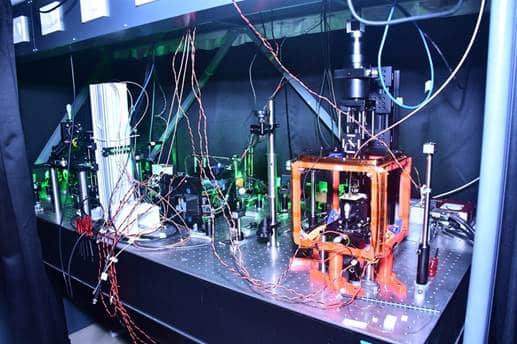Advancements in Quantum Sensing at IIT Bombay

The Photonics and Quantum Sensing Technology Lab at IIT Bombay is making significant strides in the field of quantum technologies. With the establishment of the Quantum Sensing and Metrology Hub, also known as Qmet Tech Foundation, the lab is poised to revolutionize the way we understand and utilize quantum sensing. Under the leadership of Professor Kasturi Saha, the lab is developing groundbreaking technologies, including a quantum diamond microscope and a portable magnetometer. These innovations promise to enhance precision in various applications, from semiconductor testing to biological sensing.
The Role of Qmet Tech Foundation
The Qmet Tech Foundation is one of four thematic hubs created under India’s National Quantum Mission (NQM). This initiative, implemented by the Department of Science and Technology (DST), aims to bridge the gap between fundamental research and practical applications in quantum sensing and metrology. The hub comprises 16 institutes and 40 researchers from across India, all working collaboratively towards a common goal.
Professor Saha, who serves as the Project Director, emphasizes the importance of interdisciplinary research. Her team explores the boundaries of precision metrology, sensing, and imaging. They leverage advancements in nano-photonics and quantum information processing to push the limits of what is possible in quantum technologies. By fostering collaboration among top researchers, the Qmet Tech Foundation aims to accelerate the quantum revolution in India.
Innovations in Quantum Sensing Technology
At the heart of the lab’s innovations is the quantum diamond microscope. This device utilizes defects in diamonds, specifically Nitrogen Vacancy (NV) centers, to create ultra-sensitive magnetic field sensors. When excited by fluorescent green light, these NV centers emit red light, showcasing a unique “spin” property. This property allows the sensors to couple with magnetic fields, making them ideal for applications requiring high precision.
The team aims to use the quantum diamond microscope for non-destructive testing of semiconductor chips. By mapping magnetic fields in three-dimensional layers within encapsulated chips, they can enhance the reliability of electronic devices. Additionally, the lab is exploring the use of this technology in biological sensing. By probing neuronal cultures, they can measure the tiny magnetic fields produced by neurons, providing insights into how these cells interact.
Future Prospects and Applications
The potential applications of the technologies being developed at IIT Bombay are vast. The lab is not only focused on semiconductor testing but is also looking into the biological realm. By achieving single-neuron resolution, researchers hope to understand neuronal interactions at a fundamental level. This could lead to breakthroughs in neuroscience and medical diagnostics.
Moreover, the team is working on a portable magnetometer that can be integrated into drones for surveillance purposes. This technology could enhance security measures and provide new capabilities in various fields, including environmental monitoring and disaster response.
The lab is also collaborating with diamond companies to develop indigenous diamond sources for quantum applications. By benchmarking diamond samples and measuring their properties, the team aims to ensure that India can produce high-quality diamonds for use in quantum technologies. This initiative not only supports local industries but also positions India as a leader in the global quantum technology landscape.
Observer Voice is the one stop site for National, International news, Sports, Editor’s Choice, Art/culture contents, Quotes and much more. We also cover historical contents. Historical contents includes World History, Indian History, and what happened today. The website also covers Entertainment across the India and World.

